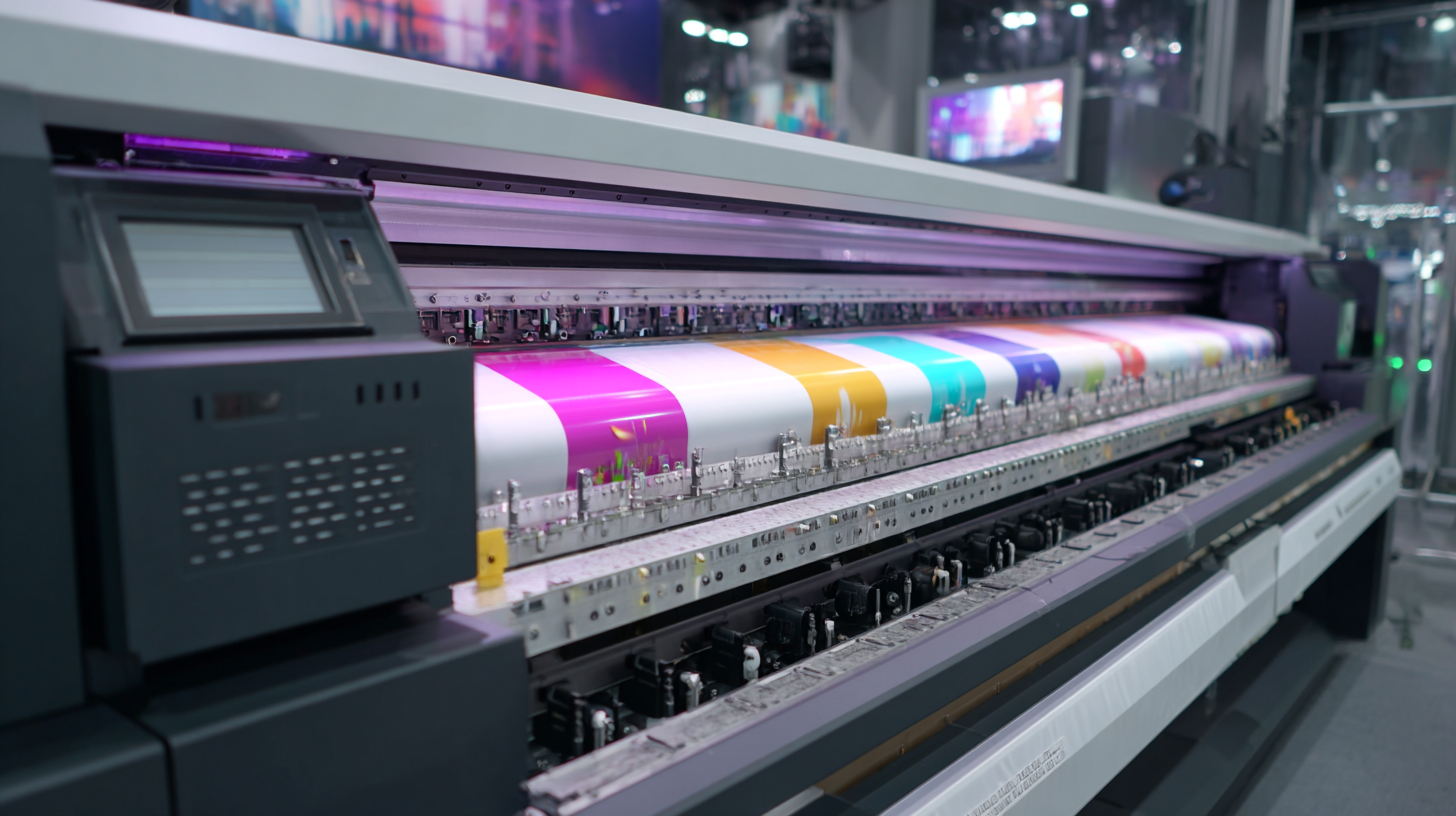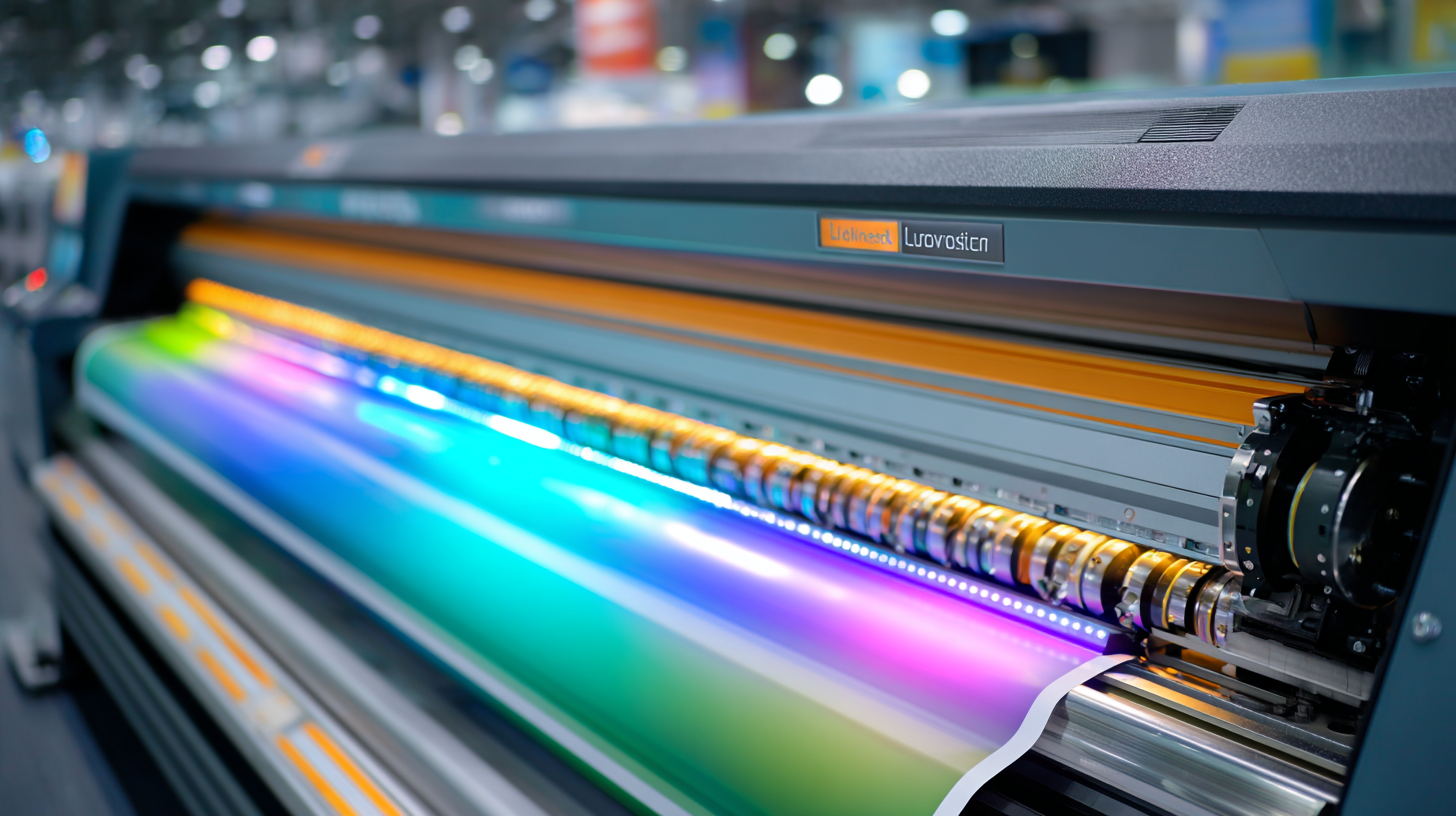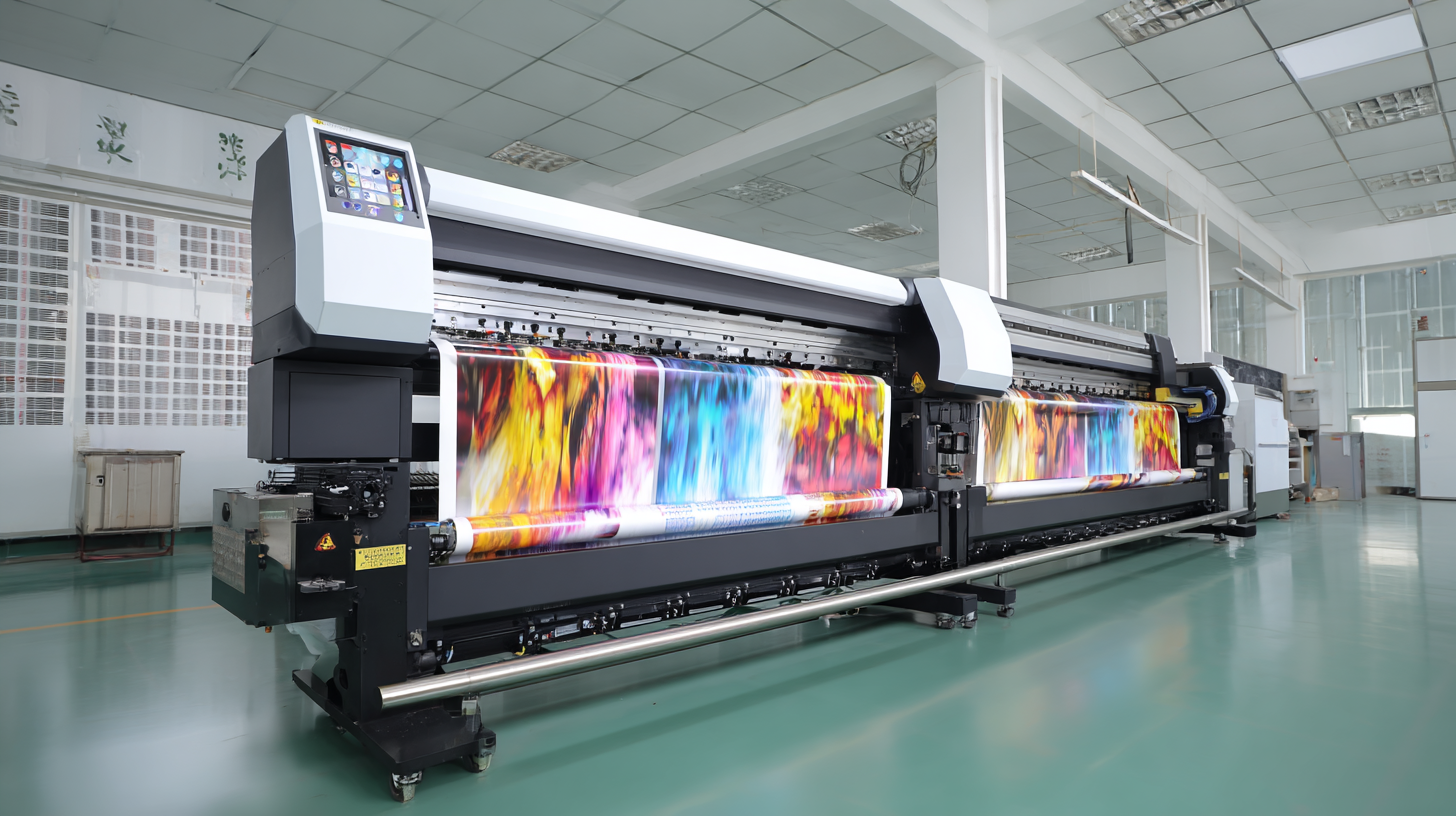Inquiry
Form loading...
In today's competitive market, the adoption of cutting-edge technologies is essential for businesses looking to enhance their productivity and product quality. One of the standout innovations in the printing industry is the UV Cylinder Printer, which has transformed the way companies approach printing on cylindrical surfaces. According to a report by Smithers Pira, the global digital printing market is expected to reach $187 billion by 2024, with UV printing technology gaining significant traction due to its ability to produce vibrant colors and durable finishes. Additionally, a study by Technavio highlighted that the demand for UV printers is projected to grow at a CAGR of 8% from 2021 to 2025, illustrating the increasing reliance of manufacturers on this technology to meet evolving consumer needs. This blog post will explore 10 key statistics that underscore why investing in a Best UV Cylinder Printer is not just beneficial but essential for your business success.

The rise of UV cylinder printing has significantly impacted various sectors, driving market growth and shaping future projections. The global printing equipment market was valued at approximately $19.74 billion in 2017 and is expected to reach $20.57 billion by 2032, showcasing a modest compound annual growth rate (CAGR) of 0.3%. Within this framework, UV cylinder printing is emerging as a pivotal technology, offering superior print quality and durability, which cater to the increasing demand for customized solutions across industries.

The A3 and A4 printing market, notably divided into laser and thermal printer kiosks, is also reflecting this upward trend. Market analysis indicates that the educational sector is likely to experience significant growth. The 3D printing market in education is projected to increase from $0.91 billion in 2023 to $3.5 billion by 2032, highlighting a robust CAGR of 17.2%. Such statistics underscore the essential role of innovative printing technologies like UV cylinder printing, not just as an addition to traditional methods, but as a critical factor for businesses looking to enhance productivity and cater to evolving consumer needs.
In today's competitive landscape, investing in a high-quality UV cylinder printer is essential for businesses looking to enhance efficiency and cost-effectiveness. With the multifunction printer market projected to reach $21.3 billion by 2025 and grow to $25.96 billion by 2033, indicating a compound annual growth rate (CAGR) of 2.5%, it's clear that demand for advanced printing solutions is on the rise. This growth underscores the increasing importance of versatile printing technologies that can meet diverse production needs.
Moreover, the hybrid printing systems market is poised for significant expansion, with a valuation surpassing $5.57 billion in 2024 and an expected CAGR of over 8.6% from 2025 to 2034. This growth is driven by the escalating demand for short-run, customizable, and high-speed operations. As companies strive to differentiate their products, UV cylinder printers stand out by offering high-quality, vibrant prints with greater efficiency and lower waste, making them a smart investment for any business aiming for success in the vibrant printing industry.

UV printing technology offers unmatched durability and versatility, making it an essential asset for businesses that work with diverse materials. Unlike traditional inks, UV inks cure quickly upon exposure to ultraviolet light, resulting in vibrant colors and sharp images that withstand the test of time. This technology allows printing on surfaces such as plastics, metals, glass, and wood—materials that often present significant challenges with conventional printing methods.
When considering the best UV cylinder printer for your business, it’s important to evaluate its compatibility with various materials. Look for printers that offer adjustable settings to accommodate different thicknesses and textures. Additionally, ensure the printer has a robust ink system designed for maximum adhesion on non-porous surfaces. This versatility not only enhances your product offerings but also broadens your market reach.
Investing in a quality UV printer also means considering the long-term benefits. The durability of UV prints resists fading and scratching, leading to reduced reprints and wastage over time. For businesses looking to maintain their reputation and customer satisfaction, the initial investment can pay off significantly through fewer complaints and higher-quality products delivered to clients.
This chart illustrates the key statistics highlighting the advantages of UV printing technology in terms of durability, versatility, production speed, cost-efficiency, and market demand growth. Emphasizing these benefits can assist businesses in making informed decisions regarding their printing needs.
UV printing technology has emerged as a transformative force in the printing industry, particularly with its positive environmental impact. According to a study by Smithers Pira, UV printing reduces waste by up to 40% compared to traditional printing methods. This significant reduction in waste can be attributed to the absence of volatile organic compounds (VOCs) in UV inks, which not only leads to a cleaner production process but also minimizes hazardous emissions into the environment. In addition, the fast curing process of UV inks allows for immediate handling, further decreasing the likelihood of damaged prints and unnecessary waste.
Another critical benefit of UV printing is its efficiency in resource utilization. A report from the Printing Industries of America indicates that UV printers consume up to 30% less energy than conventional printers throughout their lifecycle. This reduced energy consumption translates not only to lower operational costs for businesses but also contributes to a decrease in greenhouse gas emissions. By implementing UV printing technology, companies not only enhance their productivity but also take meaningful steps toward sustainability, making it an essential investment for businesses looking to align with eco-friendly practices.
| Statistic | Value | Description |
|---|---|---|
| Reduction in Waste | 30% | UV printing reduces waste through precise ink application and less excess material. |
| Energy Consumption | 50% less | UV printers use significantly less energy compared to traditional printers. |
| Solvent Usage | 80% reduction | UV printing eliminates the need for solvents, promoting a safer, eco-friendly environment. |
| Durability of Prints | 2-3 times longer | UV prints are more resilient to fading and wear, reducing the need for reprints. |
| Carbon Footprint | 20% lower | UV printing contributes to a lower carbon footprint due to decreased waste and energy use. |
| Print Speed | Up to 50% faster | Faster output reduces overall production time, leading to less resource consumption. |
| Materials Compatibility | Versatile | UV printing can be applied to a wider range of materials, maximizing usage efficiency. |
| Recycling Capability | 100% recyclable inks | Inks used in UV printing are fully recyclable, enhancing sustainability efforts. |
| Consumer Preference | 60% prefer eco-friendly products | More consumers are choosing products from environmentally conscious businesses. |
| Long-Term Cost Savings | 35% savings | Reduced waste and efficiency lead to significant cost savings over time. |
In today's competitive market, branding is not just about recognition; it’s about
standing out in a sea of options.
UV printing plays a pivotal role in achieving this by delivering
vibrant colors and
sharp details that capture attention.
The ability to print directly onto diverse materials like plastics,
metals, and glass allows businesses
to create unique products that reflect their brand identity. This customizability is crucial for companies
looking to differentiate themselves from their competitors.
Moreover, the quality produced by UV cylinder printers elevates the overall perception
of a brand. When customers receive products that boast high-definition prints with stunning finishes,
it enhances their trust and loyalty.
The durability of UV prints, resistant to fading and scratching, further reassures customers that they are investing in quality.
In a world where first impressions can make or break a sale, embracing
UV printing technology could be the key to securing a
competitive edge and fostering long-lasting customer relationships.
